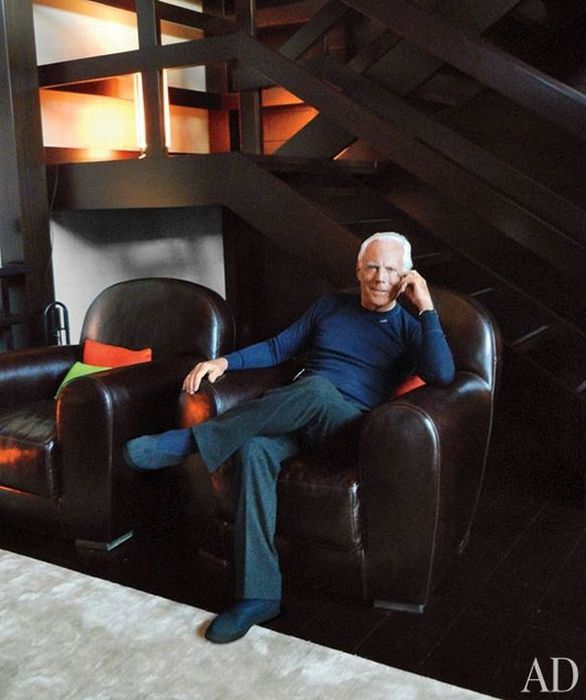House Of Giorgio Armani's, Switzerland
|
After his stint in the armed forces Armani found a job as a window dresser at La Rinascente, a department store in Milan. He went on to become a seller for the menswear department, in which capacity he gained valuable experience in the marketing aspect of the fashion industry. In the mid-1960s, Armani moved to the Nino Cerruti company, for which he designed menswear. His skills were in demand, and for the next decade, while continuing to work for Cerutti, Armani also freelanced, contributing designs to as many as ten manufacturers at a time. In the late 1960s, Armani met Sergio Galeotti, an architectural draftsman, which marked the beginning of a personal and professional relationship that lasted for many years. In 1973 Galeotti persuaded him to open a design office in Milan, at 37 corso Venezia. This led to a period of extensive collaboration, during which Armani worked as a freelance designer for a number of fashion houses, including Allegri, Bagutta, Hilton, Sicons, Gibò, Montedoro, and Tendresse. The international press was quick to acknowledge Armani's importance following the runway shows at the Sala Bianca in the Pitti Palace in Florence. The experience provided Armani with an opportunity to develop his own style in new ways. He was now ready to devote his energy to his own label, and in 1975 he founded Giorgio Armani Spa in Milan with his friend Galeotti. In October of that same year he presented his first collection of men's ready-to-wear for Spring and Summer 1976 under his own name. He also produced a women's line for the same season.
Armani established an innovative relationship with industry, characterized by the 1978 agreement with Gruppo Finanzario Tessile (GFT), which made it possible to produce luxury ready-to-wear in a manufacturing environment under the attentive supervision of the company's designer. In 1979, after founding the Giorgio Armani Corporation, Armani began producing for the United States and introduced the Mani line for men and women. The label became one of the leading names in international fashion with the introduction of several new product lines, including G. A. Le Collezioni, Giorgio Armani Underwear and Swimwear, and Giorgio Armani Accessories. In the early 1980s the company signed an important agreement with L'Oréal to create perfumes and introduced the Armani Junior, Armani Jeans, and Emporio Armani lines, followed in 1982 by the introduction of Emporio Underwear, Swimwear, and Accessories. A new store was opened in Milan for the Emporio line, followed by the first Giorgio Armani boutique. Armani's concern for the end user culminated in the development of a more youthful product with the same level of stylistic quality as his high-end line, but at a more accessible price.
Because of the democratic nature of the Emporio line, Armani felt that he had to make use of new and unconventional advertising methods. These included television spots and enormous street ads, together with a house magazine that was sent out by mail to consumers, faithful Armani Eagle wearers. Armani also felt that a relationship with the cinema was essential, both for promotional reasons and for the stimulus to creativity. He designed the costumes for American Gigolo (1980), the success of which led to a long-term collaboration with the world of film. Armani designed costumes for more than one hundred films, one of the most important of which was The Untouchables (1987).
In 1983 the designer modified his agreement with GFT. They began to produce both the Mani line for the United States and his high-end ready-to-wear line, rechristened Borgonuovo 21, after the address of the company's headquarters. During the late 1980s, despite Galeotti's death (1985), Armani continued to expand commercial horizons and licensing agreements. He opened Armani Japan and introduced a line of eyeglasses (1988), socks (1987), a gift collection (1989), and a new "basic" men's and women's line for America known as A/X Armani Exchange (1991). After the frenetic expansion of the 1990s (sportswear, watches, eyeglasses, cosmetics, home, and new accessories collections), 2000, the twenty-fifth anniversary of the brand, saw a flurry of investment activity, including stock sales and the acquisition of new manufacturing capacity intended to increase Armani's control over the quality and distribution of his products.
|
|









